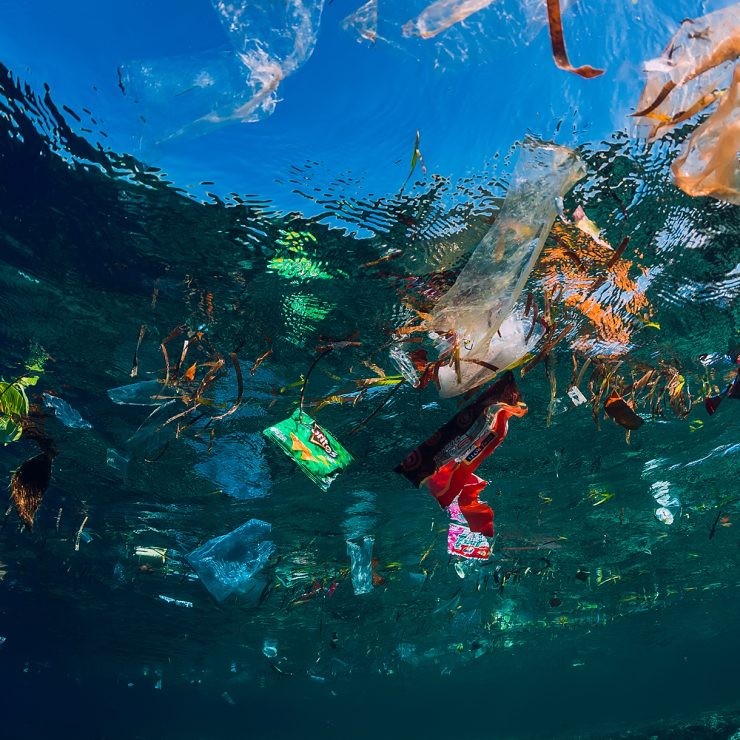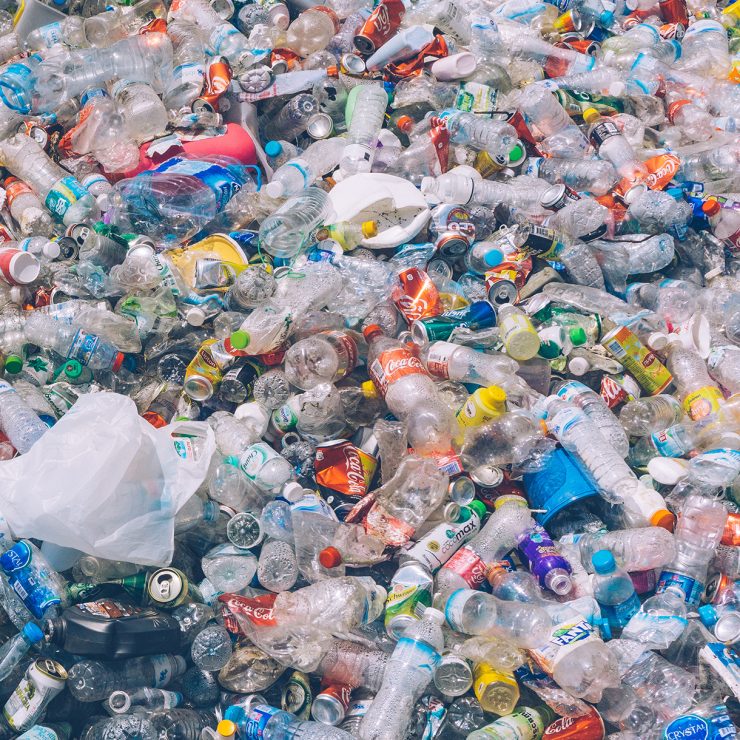By: Katie Tich
Plastic in the United States
In 2017, the U.S. generated 35.4 million tons of plastic waste.[1] The issue of American plastic consumption and its harmful environmental effects has become relatively common knowledge in recent years. More consumers are doing their part to reduce the amount of plastic landfilled, incinerated, and dumped in the ocean by dutifully recycling bottles, containers, cups, and more, which the plastics industry has promised will become new, recycled materials.
The problem? Only 8.4% of that 35.4 million tons of plastic in 2017 was actually recycled.[2] In fact, 79% of all plastic ever produced has been landfilled, incinerated, or dumped in the ocean.[3]
Beginning in the 1970’s when the environmental movement took off and the production of single-use plastics simultaneously began to grow, there was an “environmental” push in the cultural zeitgeist to blame consumers for plastic waste. It’s their fault for failing to divert all of that recyclable plastic, right? Not exactly, as it turns out. Bob Leonard, Chief Content Officer at the non-profit environmental corporation This Spaceship Earth, puts the truth quite succinctly: “We have created a disposable culture, and no amount of recycling will fix it. We need to remedy this at the root cause: producer-enforced disposability and a normalized throwaway culture.“[4]
The problem is not you—the problem is the plastics industry that has convinced Americans to buy millions of tons of plastic per year on the premise that it will be recycled, which is far from the truth.
China’s National Sword
In 2017, China issued a landmark policy banning the imports of foreign waste, called the National Sword policy.[5] For decades, the U.S. had been shipping a large portion of its plastic waste to China to be recycled. Since 2017, the National Sword policy has shed light on the U.S. recycling problem that has existed for decades; the majority of the plastic Americans think they are recycling is actually being incinerated or landfilled.[6] This was already happening on U.S. soil before National Sword, but at least some plastic waste was exported and recycled abroad. Now that China is no longer accepting imports of foreign waste, the millions of extra tons of American plastic waste that are burned, landfilled, or dumped into the ocean each year have drastically illuminated the inadequacy of U.S. recycling infrastructure. Much of the plastic you have been assured is recyclable—the same plastic you conscientiously put in your blue bin each week—will likely end up in the ocean, in a landfill, or burned.
What Can I Do?
Understandably, these facts can lead to a sense of hopelessness. Should we even recycle plastic anymore? The answer is yes; despite the dismal data that has come to light, continuing to recycle will ensure that at least some percentage of plastic will actually be recycled, rather than condemning all plastic to landfills, oceans, and incinerators. Be sure to carefully read your local recycling guidelines. In most places, number 1 and 2 plastics can usually be recycled, but higher numbers cannot.[7]
However, to improve plastic diversion and reduce plastic waste, Americans need to take further action.
Awareness is the First Step
Consumers do not deserve to shoulder the blame for the national—and global—plastic waste crisis. Knowing the facts, we as consumers can begin to hold manufacturers accountable. Only then can true change happen. How can we start holding plastic producers accountable? There are a few ways:
1) Spread the word. Make sure as many people as possible know the truth about plastics! The old adage may be well-worn, but it holds true — knowledge is power. This brings up the next action you can take—
2) Contact your local or state representative and let them know your concern about the plastic waste problem. Tell them that you want systemic change to our recycling infrastructure—they are there to listen to their constituents and what we want, and if enough people express our deep concern about the frightening truth of U.S. plastic “recycling,” we can help promote change.
3) Sign petitions! This is a great concrete way to hold manufacturers and politicians accountable. There are lots of petitions in circulation demanding that plastic producers and policymakers enact wholesale changes to U.S. recycling practices and infrastructure and set straight the misleading rhetoric around plastic recycling. Here are a few you can sign right now:
For more information, check out —
How Big Oil Misled The Public Into Believing Plastic Would Be Recycled
Exposing The Myth Of Plastic Recycling: Why A Majority Is Burned Or Thrown In A Landfill
[1] https://www.epa.gov/facts-and-figures-about-materials-waste-and-recycling/plastics-material-specific-data
[2] https://www.epa.gov/facts-and-figures-about-materials-waste-and-recycling/plastics-material-specific-data
[3] https://www.wbur.org/hereandnow/2019/09/20/how-to-recycle-plastic
[4] https://thisspaceshipearth.org/crew_commentary/recycling-is-a-point-solution-to-a-systemic-problem/
[5] https://theintercept.com/2019/07/20/plastics-industry-plastic-recycling/
[6] https://www.npr.org/2020/09/11/897692090/how-big-oil-misled-the-public-into-believing-plastic-would-be-recycled
[7] https://theintercept.com/2019/07/20/plastics-industry-plastic-recycling/

